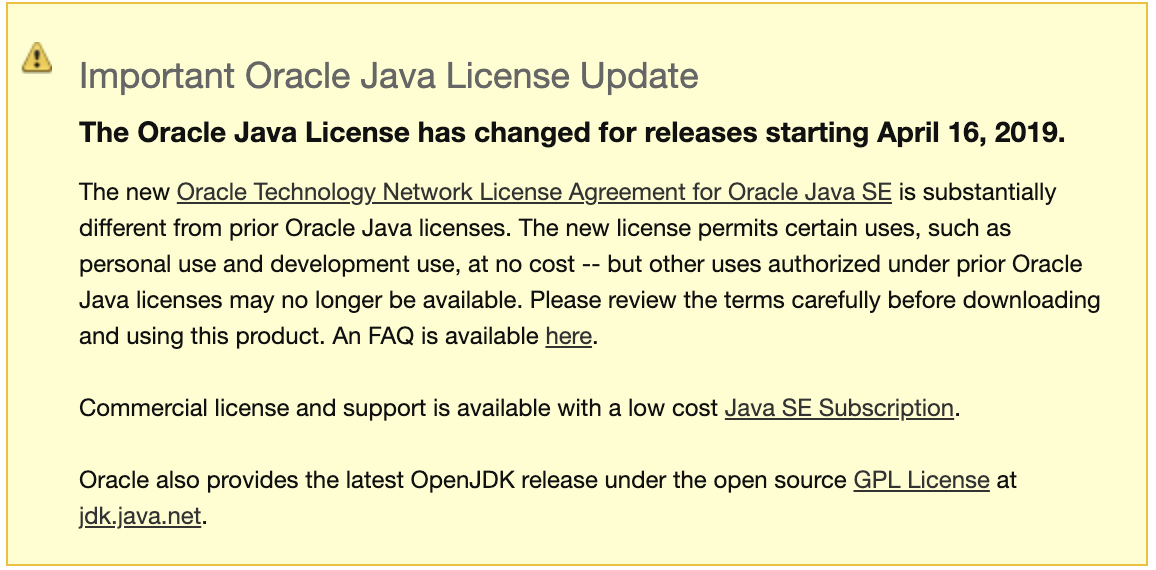
Oracle cited an example in which a company with a total employee count of 28,000, including full-time and part-time employees and agents, consultants, and contractors, would be charged US$2.268 million annually. As of January 23 rd 2023, Oracle has replaced Oracle Java SE Subscriptions commonly purchased by customers with a new Oracle Java SE Universal Subscription. The change in licensing term included this Oracle threat: You may not use the Programs for any data processing or any commercial, production, or internal business purposes. The best thing you can do is understand your risk and take action to mitigate that risk before Oracle forces you into another expensive long-term contract. Java is embedded or bundled with so many Oracle and non-Oracle applications. In short, an organization is potentially on the hook for a massive subscription fee increase that may have minimal benefit to the operation.īig Red – which acquired Java with its buyout of Sun Microsystems in 2009 – said the new Java SE Universal Subscription is “a simple, low-cost monthly subscription that includes Java SE Licensing and Support for use on desktops, servers or cloud deployments.”Īccording to Oracle, the pricing starts at US$15 per employee per month for as many as 999 employees and drops as low as US$5.25 per month for 40,000 to 49,999 users. Oracle has modified its licensing policies and pricing with the introduction of the new Oracle Employee Java SE Universal Subscription model. At the same time, the tech giant restricted access to Java Standard Edition (SE) version 8, which it also distributed under an Oracle Technology Network (OTN) license. Oracle Java licensing compliance works a little differently from other ways of complying with Oracle. What this means for an organization is that regardless of its number of Java users or its server footprint, it must count every employee, contractor, consultant, and agent to determine its Java subscription bill.
#ORACLE JAVA LICENSING CHANGES LICENSE#
On January 23, 2023, the company introduced a new license metric, the SE Universal Subscription, and the controversial new Java pricing plan is based on the customer’s total number of employees, rather than the number of employees using the software. Oracle has once again changed licensing rules for its widely-used Java product. Eclipse, Azul, and other providers may see increased Java downloads from new Oracle pricing.or might change significantly before being considered production-ready. Customers licensing any of the products listed above have access to all the features. your rights associated with those Java SE versions. Initially, these don't seem to relate to each other, however as we will see, there is a connection. Oracle Java SE Universal Subscription: Entitles you to use Oracle’s Java SE 20. One in five Java users can expect an Oracle audit in the next three years. Oracle have introduced Oracle Java 17 under a new 'no-fee' license agreement.


Gartner finds that Java licensing changes by Oracle are two to five times more expensive for most organizations.


 0 kommentar(er)
0 kommentar(er)
